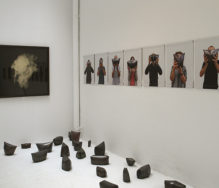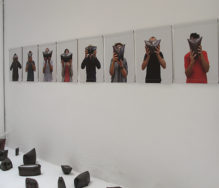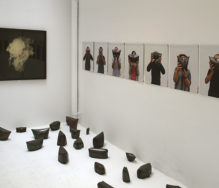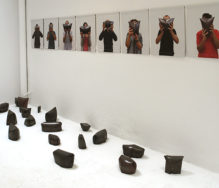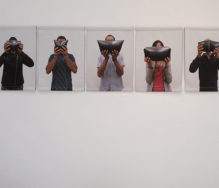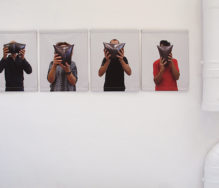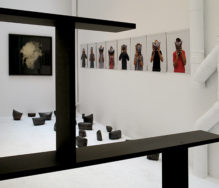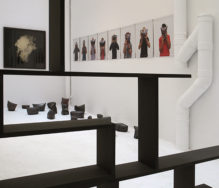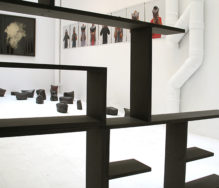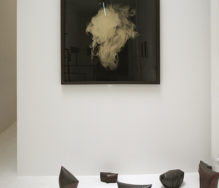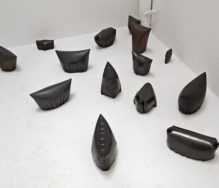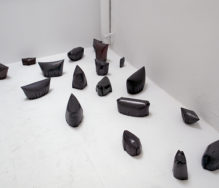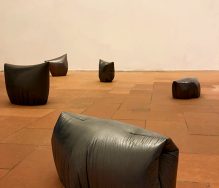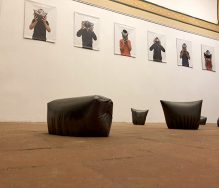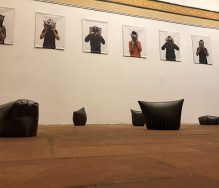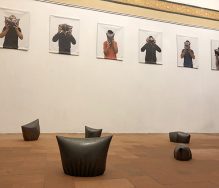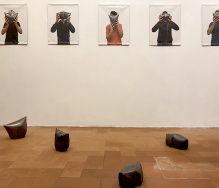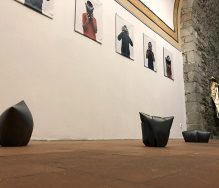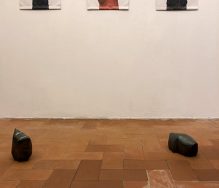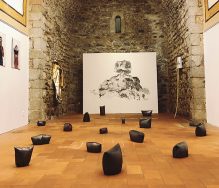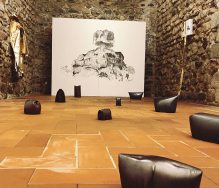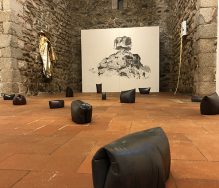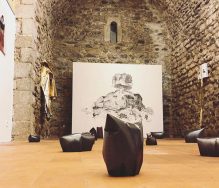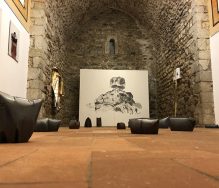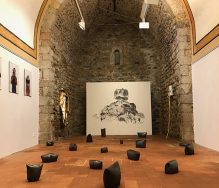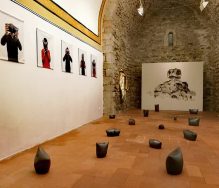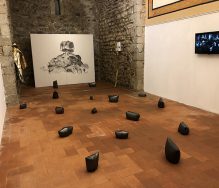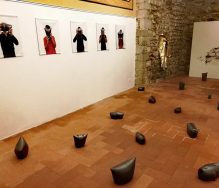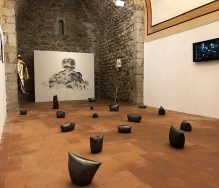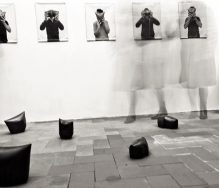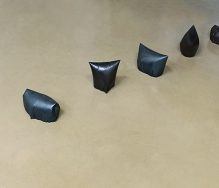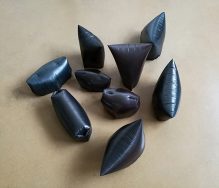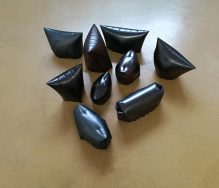The size of Bag. Comercial Landscape.
– 2019. Catastrophe without barbarie.
Arte Aurora Galeria. Barcelona.
Solo Show.
– 2018. Toni Giró Santcorneliarts segona temporada / Reunió 2.
With Albert Bayona i Aureli Ruiz.
Curated by per Mercè Alsina i Enric Maurí
Concret. Installation of variable dimensions.
Photo: Vanessa Pey, Jordi Folgado and Toni Giró
—
The project The size of a bag, 2018, takes his name from one of John Berger’s latest books and is made up of a collection of concret volumes arranged on the floor as a landscape (Commercial Landscape) and a serie of photographic portraits (The Size of a Bag. Portraits), where different people hold in front of their face one of these volumes that prevents them from seeing in front and that viewers see the features of their portrayed face. This project continues with a previous sculptural investigation –Blister Suite (2008-2018), Bulla (2015) and Last Verse (2015) -, on our economic system, the mechanisms of homogenization and domestication of habits through consumption and the regulation of the ways of living that cancel the emancipating potential of people and communities.As Berger says, “The bag in question is a small bag of resistant. A stock exchange is formed when two or more people agree and join in to resist a new global economic order that can not be more inhumane”. The resistance understood in this way does not mean only refusing to accept the absurd image of the world that is offered to us, but also to denounce it, and the paradoxical processes that art offers us allow to do so radical way, from the poetic and contradictory presentation of the vestiges of the world.The collection of sculptures produced by filling conventional plastic bags with concret, each one of its size, its folds and their chromatic deafness constitutes a type of archaeological collection that tracks contemporary consumption through the envelope. If these objects are usually presented as a light and colorful advertising vehicle, only the frozen form that sets them apart is preserved in this installation. The weight of the concret and the revival and removal of the bags on the ground plane transforms them into a residual landscape. Bags are no longer full of merchandise (goods, commodity) but their inconsistent void is heavily weighed to become a device that activates reflection. The horizontal plan of the land, of a landscape nature, is related to the alignment of the portraits printed on fabric and hanging on the wall. The portraits complemented with the sculptures, a “desire to unmask reality” in the sense that Benjamin and Brecht gave it to photography, as his ability to melt with things, to live for a while in that one look. Make this an experience long. Then, make this experience a way and unfold a visual work.
—
The project The size of a bag, 2018, takes his name from one of John Berger’s latest books and is made up of a collection of concret volumes arranged on the floor as a landscape (Commercial Landscape) and a serie of photographic portraits (The Size of a Bag. Portraits), where different people hold in front of their face one of these volumes that prevents them from seeing in front and that viewers see the features of their portrayed face. This project continues with a previous sculptural investigation –Blister Suite (2008-2018), Bulla (2015) and Last Verse (2015) -, on our economic system, the mechanisms of homogenization and domestication of habits through consumption and the regulation of the ways of living that cancel the emancipating potential of people and communities.As Berger says, “The bag in question is a small bag of resistant. A stock exchange is formed when two or more people agree and join in to resist a new global economic order that can not be more inhumane”. The resistance understood in this way does not mean only refusing to accept the absurd image of the world that is offered to us, but also to denounce it, and the paradoxical processes that art offers us allow to do so radical way, from the poetic and contradictory presentation of the vestiges of the world.The collection of sculptures produced by filling conventional plastic bags with concret, each one of its size, its folds and their chromatic deafness constitutes a type of archaeological collection that tracks contemporary consumption through the envelope. If these objects are usually presented as a light and colorful advertising vehicle, only the frozen form that sets them apart is preserved in this installation. The weight of the concret and the revival and removal of the bags on the ground plane transforms them into a residual landscape. Bags are no longer full of merchandise (goods, commodity) but their inconsistent void is heavily weighed to become a device that activates reflection. The horizontal plan of the land, of a landscape nature, is related to the alignment of the portraits printed on fabric and hanging on the wall. The portraits complemented with the sculptures, a “desire to unmask reality” in the sense that Benjamin and Brecht gave it to photography, as his ability to melt with things, to live for a while in that one look. Make this an experience long. Then, make this experience a way and unfold a visual work.

